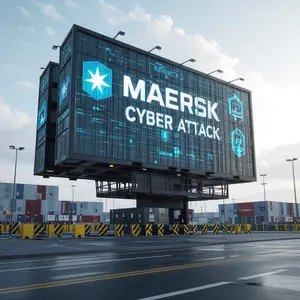The European shipping industry, a backbone of global trade, faces increasing threats from cyberattacks. In recent years, the Maersk cyber incident has become a pivotal case study, highlighting both the vulnerabilities and the resilience required in maritime cybersecurity. As digitalization accelerates across shipping operations, the lessons from Maersk’s experience are more relevant than ever.
The Maersk Cyber Attack: A Wake-Up Call
In June 2017, A.P. Moller-Maersk, one of the world’s largest shipping companies, was hit by the NotPetya malware. The attack crippled Maersk’s IT systems globally, disrupting port operations, container tracking, and communication. The financial impact was severe, with estimated losses reaching $300 million. More importantly, the incident exposed how interconnected and fragile maritime logistics can be in the face of sophisticated cyber threats.
Key Lessons for European Shipping Companies
1. Cyber Hygiene is Non-Negotiable
Maersk’s experience underscores the importance of basic cyber hygiene. Regular software updates, patch management, and employee training can prevent many attacks. Shipping companies must ensure that all systems, from office networks to onboard vessel controls, receive consistent security updates.
2. Incident Response Planning
Maersk’s rapid recovery was due to a robust incident response plan. European shipping firms should develop and routinely test their own response protocols, ensuring business continuity even when core systems are compromised.
3. Network Segmentation
One reason NotPetya spread so quickly within Maersk was the lack of effective network segmentation. Shipping companies should isolate critical operational systems from general office networks, limiting the reach of malware and minimizing operational disruption.
4. Supply Chain Vigilance
Shipping is a highly interconnected industry, relying on partners, ports, and third-party vendors. Cybersecurity must extend beyond the corporate firewall to encompass the entire supply chain. Vetting partners and sharing threat intelligence is vital for collective defense.
5. Investment in Resilience
Maersk’s ability to restore data from backups located in remote offices was crucial. European shipping companies should invest in secure, offsite backups and redundancies, ensuring rapid recovery after a cyber incident.
The Path Forward
The Maersk attack was a turning point for maritime cybersecurity. European shipping companies must treat cyber risk as a core business issue, not just an IT concern. By learning from Maersk’s experience—prioritizing cyber hygiene, planning for incidents, segmenting networks, securing supply chains, and building resilience—shipping firms can safeguard their operations and the global flow of goods.
As the industry continues to digitize, cybersecurity will remain a critical challenge. The lessons from Maersk serve as a blueprint for protecting Europe’s shipping sector against future threats.




